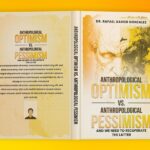Mathematical modeling provides powerful tools for analyzing systems that change over time, with discrete and continuous approaches serving different analytical needs. Discrete-time models represent systems where changes occur at distinct intervals, while continuous models describe systems evolving smoothly without interruption. Understanding the characteristics, applications, and limitations of each framework enables researchers and analysts to select appropriate methodologies for their specific problems. The choice between difference equations and differential equations depends on the nature of the system being studied, available data, and the type of insights required.
Read also: Practical Design Solutions for Every Room in the Home
Characteristics of Discrete-Time Models
Difference equations form the foundation of discrete-time modeling, capturing system states at specific time steps. These models excel in representing scenarios where measurements or events occur at regular intervals, such as daily stock prices, monthly population counts, or quarterly financial reports. The discrete nature aligns well with digital systems, computer simulations, and situations where data collection happens periodically rather than continuously. Recursive relationships in difference equations allow each state to depend explicitly on previous states, making them particularly useful for predictive modeling in fields like economics and digital signal processing.
Numerical implementation of discrete models tends to be computationally straightforward, as the time steps provide natural breaks for calculation. This characteristic makes them accessible for implementation in various programming environments without requiring advanced numerical methods. The explicit time intervals also facilitate comparison with empirical data collected at similar frequencies. In biological systems, discrete models often represent generations or breeding cycles, while in engineering, they may describe sampled data from control systems. The granularity of the time steps significantly influences model behavior, with smaller intervals providing more resolution but requiring more computational resources.
Continuous Change and Differential Equations
Differential equations model systems where changes occur continuously over time, representing phenomena like fluid flow, chemical reactions, or population growth in unrestricted environments. These equations express relationships between functions and their derivatives, capturing instantaneous rates of change rather than step-by-step transitions. Continuous models prove particularly valuable when the underlying processes operate without natural breaks or when the time scales of interest are much smaller than any observable sampling interval. Physics and engineering traditionally rely on differential equations to describe motion, electromagnetic fields, and heat transfer with precise temporal continuity.
Analytical solutions to differential equations provide exact descriptions of system behavior when obtainable, though many realistic scenarios require numerical approximation methods. The continuity assumption allows for smooth interpolation between time points and often leads to more elegant mathematical formulations of fundamental laws. In biological contexts, continuous models may represent nutrient absorption or disease spread through populations, while in economics, they can model continuously compounded interest or market adjustments. The choice between ordinary and partial differential equations depends on whether the system requires modeling changes across space as well as time.
Framework Selection for Dynamic Systems
The decision to use discrete or continuous modeling approaches involves several practical considerations. Data availability often drives the choice, with discrete models matching scenarios where measurements come at intervals and continuous models suiting situations with theoretically unbroken observation. Computational constraints may favor difference equations for complex systems where differential equations would require intensive numerical solving. The nature of the underlying processes also guides selection—inherently discrete events like inventory management or digital communications naturally fit difference equations, while physical phenomena like motion or chemical diffusion align with differential equations.
Hybrid approaches have emerged to handle systems exhibiting both discrete and continuous characteristics. These combined models prove valuable in scenarios like biological systems with continuous physiological processes interrupted by discrete events, or manufacturing systems with continuous material flows and discrete operational decisions. The modeling framework should ultimately serve the analysis goals, whether predicting future states, understanding system stability, optimizing parameters, or testing theoretical assumptions. Simplifying assumptions in either approach require careful examination to ensure they don’t obscure important system behaviors or lead to unrealistic conclusions.
Discrete models often provide more intuitive understanding of iterative processes and recursive relationships, making them valuable teaching tools for dynamic systems concepts. Their structure mirrors how many real-world decisions are made—based on periodic assessments rather than continuous monitoring. The explicit time steps also facilitate sensitivity analysis, allowing researchers to examine how changes in parameters or initial conditions propagate through subsequent periods. In financial applications, discrete models align with reporting periods and planning cycles, while in ecology, they may represent seasonal variations or annual surveys.
Continuous models offer different advantages, particularly in their ability to capture instantaneous effects and smooth transitions. They enable the application of powerful mathematical tools from calculus for analyzing rates of change, equilibrium points, and system stability. The derivatives in these equations represent physical concepts like velocity, acceleration, or reaction rates directly, providing natural connections to theoretical frameworks. In engineering design, continuous models allow for precise performance predictions between measurement points, while in physics, they maintain the fundamental time symmetry of many natural laws. The mathematical elegance of continuous formulations often reveals relationships and symmetries that might be obscured in discrete versions of the same systems.
Numerical analysis plays a crucial role in both approaches, though the challenges differ. Discrete models may suffer from numerical instability if time steps are too large, missing important system dynamics between intervals. Continuous models implemented numerically face approximation errors from discretization methods, with trade-offs between computational effort and accuracy. The stiffness of equations—where components operate on vastly different time scales—presents challenges in both frameworks, requiring specialized solution techniques. Modern computing power has reduced but not eliminated these computational considerations, especially for high-dimensional systems or real-time applications.
Theoretical analysis of model behavior also varies between the frameworks. Stability analysis for difference equations examines whether solutions remain bounded as time progresses, while for differential equations it focuses on equilibrium points and their attracting properties. Bifurcation analysis reveals how qualitative behavior changes with parameters in both cases, though the mathematical tools differ. Control theory applications must account for the framework differences, with discrete-time controllers requiring different design approaches than their continuous counterparts. These analytical considerations influence which framework provides more insight for a given application.
Practical implementation often involves transforming between frameworks for different purposes. Continuous models may be discretized for numerical simulation or computer implementation, while discrete models might be approximated as continuous for analytical convenience when time steps are small. These transformations require care to preserve essential system properties and maintain accuracy appropriate for the intended use. In control systems, for example, the discretization of continuous controllers must account for sampling effects to avoid destabilization, while in scientific computing, discrete approximations of continuous phenomena must ensure convergence properties.
The interpretation of results differs between the modeling approaches, with discrete models providing explicit values at specific times and continuous models offering functional relationships. This distinction affects how model outputs compare with experimental data and what statistical methods are appropriate for parameter estimation. Model validation techniques must account for the framework characteristics, whether assessing goodness-of-fit for point predictions from difference equations or evaluating continuous trajectory matches from differential equations. The choice of framework influences not just the modeling process but the entire analytical pipeline from formulation to interpretation.
Emerging applications in fields like systems biology and network science continue to expand the use cases for both modeling paradigms. Discrete models help analyze molecular pathways where individual binding events occur, while continuous models describe concentration gradients and bulk chemical reactions. In social network analysis, discrete models may represent individual connections forming, while continuous approximations describe information diffusion. The complementary strengths of both approaches encourage their combined use in complex systems where different components or scales suggest different natural representations.
The historical development of these frameworks reflects their respective domains of application, with continuous calculus emerging from physical motion studies and discrete methods growing alongside digital computation. Modern practice recognizes both as essential tools, with the modeling choice depending on problem characteristics rather than absolute superiority of either approach. Many contemporary challenges in climate modeling, epidemiology, and financial risk assessment employ both types of models at different stages of analysis, recognizing that complex systems often require multiple perspectives for comprehensive understanding.
Future advancements in modeling techniques will likely further blur the boundaries between discrete and continuous approaches, with adaptive methods that shift resolution as needed and hybrid formulations that maintain consistency across representations. The fundamental distinction between the frameworks will remain relevant, however, as it reflects deep differences in how systems can behave and how observers interact with them. Practitioners who understand both paradigms can select tools more effectively and develop insights that might be obscured by commitment to a single modeling philosophy.
The art of mathematical modeling lies in matching framework to purpose, simplifying reality enough to permit analysis while retaining essential features that determine system behavior. Whether through the step-by-step progression of difference equations or the smooth flows described by differential equations, both discrete and continuous models provide valuable windows into dynamic systems across scientific disciplines and practical applications. Their complementary nature ensures that neither approach will supersede the other, but rather that skilled analysts will continue drawing on both as appropriate for the challenges they face in understanding and influencing complex, changing systems.
















